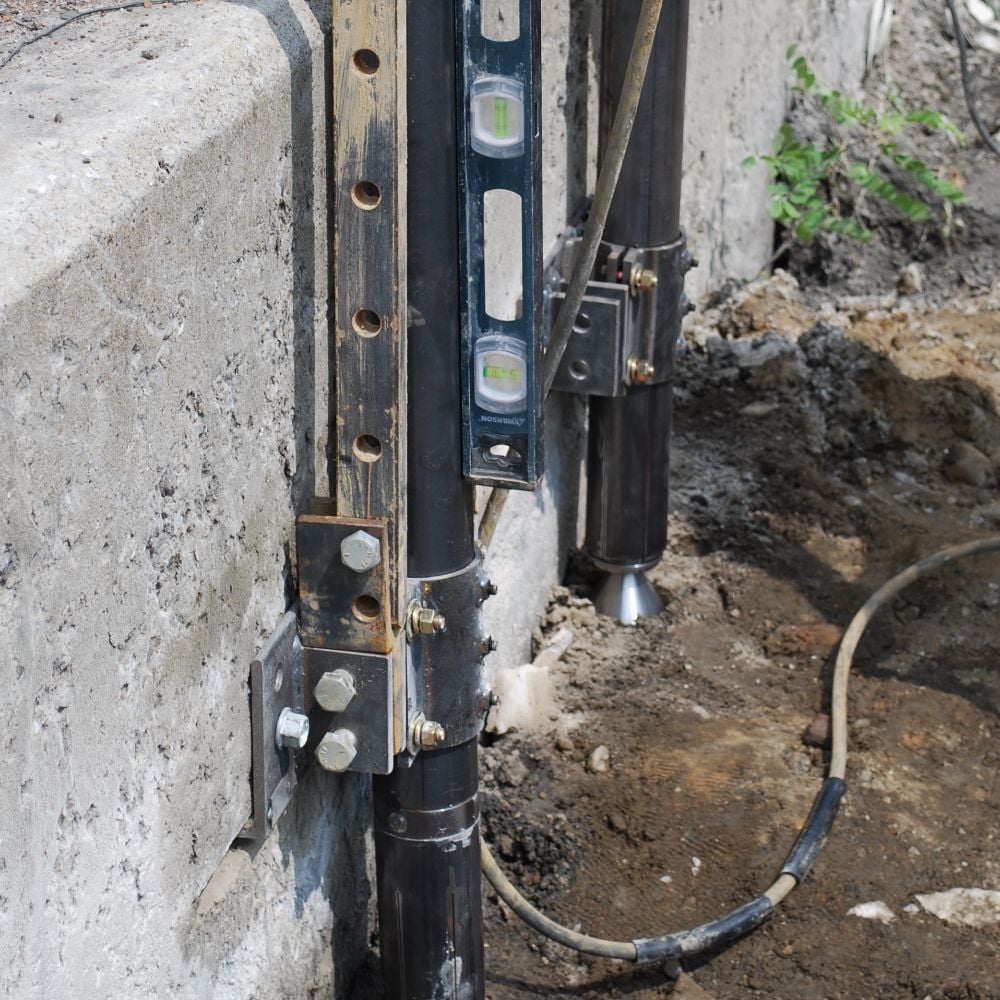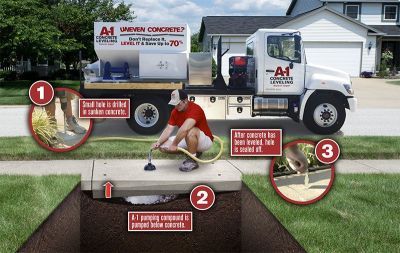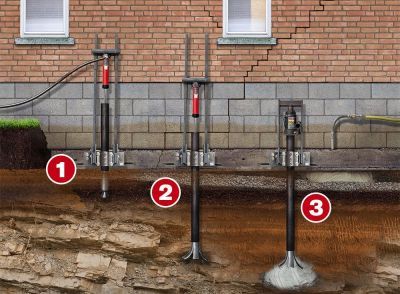Concrete Leveling vs. Foundation Piers: What's the Difference?
April 3rd, 2023 | 3 min. read
By Sarah Etler

Learn the difference between concrete leveling and foundation piering, and how they can work together to repair your concrete.
If your concrete is showing signs of movement, like cracking, sinking, or heaving out of place, it makes sense to be worried about what it could mean for your home.
Concrete is a big investment, and whether it’s flat panels, like for a sidewalk, or vertical panels, like for a home foundation, seeing it shift out of its proper place is nerve-wracking.
Luckily, you have options if you’re faced with the dilemma of shifting concrete walls or slabs. Here at A-1 Concrete Leveling, we’ve been helping worried homeowners like you stabilize their concrete with professional concrete leveling and foundation piering services for over 30 years.
The goal of both concrete leveling and foundation pier repairs is to stabilize the concrete, but leveling is meant more for flat concrete while piers work better for foundations and concrete walls.
In this article, we’ll be breaking down the difference between these two concrete stabilization methods, plus explaining how these two repair options can work together for the best result.

Concrete leveling is a concrete repair method that lifts settled or sunken concrete slabs back up into a level position.
To do this, small holes are drilled into the affected concrete slab, then a leveling compound is pumped through the holes and the pressure from the material raises the slab and creates a sturdy base for the newly leveled concrete to sit on.
Due to the nature of the concrete leveling process, it is used primarily for flat concrete work, like sidewalks, driveways, pool decks, A/C pads, patios, and more.
Interior concrete floors, like in basements and garages, along with porches, can also be lifted up using concrete leveling. However, if the foundation walls surrounding these concrete slabs have moved, it may also be necessary to utilize foundation piers in conjunction with leveling.

Foundation piers are primarily used for stabilizing walls, or more specifically, the brick or concrete footings that hold up the walls.
Foundation piering works by driving strong piers made from steel into the ground under the foundation until they reach a firm layer of rock or soil. The firm rock or soil base provides a stable place where the pier can support the sinking foundation.
When researching foundation piers, you’ll likely come across helical vs. push piers, which are two types of foundation piers. These both essentially do the same thing, but different applications may be more appropriate for one over the other.
When foundation piers are driven underground, the pressure being used to get them into place is measured. In order to achieve a stable and sturdy foundation repair, the pressure must reach an acceptable baseline.
Using Leveling and Piering Together
While foundation piers and concrete leveling are two separate concrete repair methods that aim to achieve different goals, they can be used in conjunction with each other in order to get optimal results.
Depending on the problem you’re having with your concrete, it may be necessary to stabilize the moving foundation footing before leveling any interior or porch concrete slabs.
Basements, Garages, and Other Interior Areas
If your basement or garage walls are showing signs of movement, and the concrete slab floor has sunken, you may be able to install foundation piers outside to stabilize the walls and have your concrete floor leveled inside to bring the concrete slabs back to an even position.
Porches
Concrete porches can sometimes settle independently from wall movement and only require concrete leveling to bring it back to an even position, but sometimes the porch walls themselves can move or pull away from the house foundation. In the case of wall movement, piers are necessary to stabilize the wall before lifting the slab with concrete leveling.
Your Next Steps: Concrete Leveling or Foundation Piers?
Now that you know a little more about the difference between concrete leveling and foundation piers, you’re ready to decide if one or both of these concrete repair methods might be a good option for your home.
Keep in mind that both of these options serve different purposes, and depending on the condition or location of your concrete, you might need both services.
A-1 Concrete Leveling has a national network of locations that can help assess, diagnose, and treat your unique concrete problems. Click the link below to request a free onsite estimate!
While all A-1 locations are experts in concrete leveling, not all locations offer foundation pier services. However, all locations will be able to point you in the right direction if they find that foundation repair is necessary before restoring your concrete with leveling.
Want to learn more? Check out the following related resources from A-1’s Concrete Academy:
Sarah Etler joined A-1 Concrete Leveling after receiving her Bachelor of Arts degree in English from Northern Kentucky University. As A-1's Content Marketing Manager, she works closely with industry experts to produce content that will best answer questions related to concrete repair and maintenance practices. Sarah loves living a life full of discovery and is excited every day to see what new things she can learn and share with those around her.